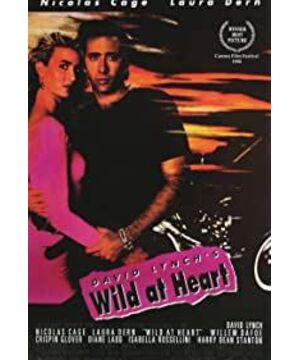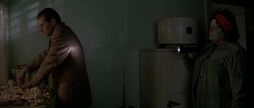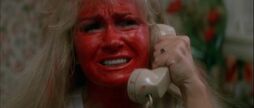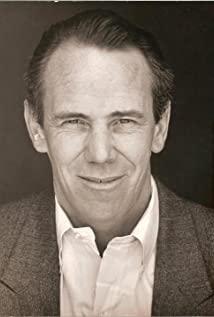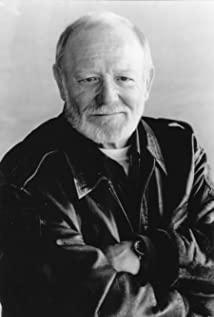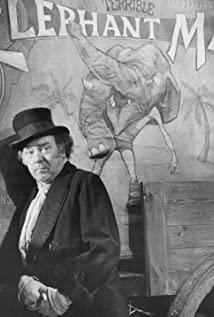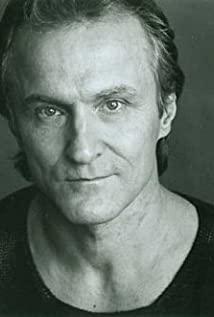In May 1990, when the famous director and chairman of the jury announced that the 43rd Cannes Film Festival's highest award, the Palme d’Or Award, was awarded to David Lynch’s new work "Wild in the Heart", the hall There were applause and mocking boos at the same time. This situation and this scene just foreshadows what happened after the film was released. Critics and audiences had mixed reviews for Lynch’s new work. The wild heart of this headache-inducing but unignorable director seemed to be silent. Four years later, it once again disrupted the contemporary film scene.
The chaotic response is not surprising. "Wild in Heart" is indeed a bold, unconventional, full of terrible, ugly hellish scenes, and even "out of control" film. The core plot of the film is actually very simple and even traditional. A pair of young people who love each other deeply, regardless of the opposition of the woman's mother, finally broke through all the sinisters and conspiracies, and found their own "Wizard of Oz". This story of traversing the wild jungle of the contemporary world and returning to the heartland of love and compassion is of course very moving for countless contemporary audiences, but it is important for the development of contemporary world film art. What's more, Lynch used his bold and creative imagination to leave another classic film model called "postmodernism" for the world film industry.
As some critics have pointed out, this impactful and even "excessive energy" film lacks some "self-discipline" and non-centeredness. It lacks the necessary character development, sufficient drama motivation, and does not conform to the normative narrative logic. Its thin plot lines often burst out with many distracting cracks, and it appears to be completely out of control-"Although it is full of meaningful details, this does not prove that David Lynch is a coherent and clear narrative. Genius."
In fact, compared with the commercial and many artistic films that are popular in the world, "Wild in Heart" is indeed a film that does not conform to the standard or even lacks a "stable viewing center". The first scene of the film represents Lynch's departure from the film's narrative convention. The raging fire on the background of the subtitles that occupies the entire screen seems to herald the beginning of a plot. In fact, the audience will soon discover that its meaning is not so much plot as it is visual. It only constitutes a hint to the successive disasters and violence that fill the entire film. In other words, it is at most just a meaningful detail in the film. The same is true for the development of the characters and stories in the film. After a sudden violent scene at the beginning (Syler killed Bob in self-defense), the film skipped the life of Sailor and other characters, and turned directly to two years later. Subsequently, a series of characters followed one after another. This includes Marietta's two lovers-private detectives Johnny and Santos, as well as Lundiel, who is engaged in drug trafficking and running a brothel, and a prostitute under his staff. But only from the intermittent conversations of the characters and a few scattered scenes, we can roughly know the relationship between these characters and the past stories of the two protagonists. The randomness of this narrative is almost permeated throughout the film. For example, after a related scene, we can no longer know the future of Santos, nor the fate of Lundier. In the film, Peru’s girlfriend Durango seems to be just one of many cutscene characters, and if you carefully consider it, in the five years since Sailer was arrested and imprisoned for the second time, we talked about Lula and her and her children’s Life is also ignorant.
However, the lack of this "viewing center" for Lynch cannot be attributed to a technical error or lack of narrative coherence. In fact, this "center", or the focus of controlling the narrative, is not only "absent", but also "relentlessly and meaningfully absent." In the post-modern society where the internationalization of capital, the information industry and the rapid development of modern media high technology, the rapid development of modern media has caused people to lose their stable ideological center. As far as the United States is concerned, with the popularization of television since the mid-1970s and the subsequent development of the video industry, the ubiquitous lens has further "humanized nature" to a large extent following the conquest of the Industrial Revolution. All objective worlds are appearing in front of people in the form of texts. It makes the public increasingly lose the "objective world", and thus also lose the self as the subject. And in this context, as the truth about the Vietnam War that left memorable trauma to American society was frequently reported on television and other media, the American public began to put forward a series of moral, ethical, and ideological assumptions and authority. question. It has led to an increasingly divided consciousness of the contemporary public. On the other hand, the development of modern communication technology itself has also exacerbated the disintegration of social dominant consciousness. The increasingly popular video cassette recorders since the 1980s have greatly changed the way people view social texts. The audience can not only choose the program and time to watch, but also can freely select the information and even "process" the watch through various means such as fast forward, fast rewind, slow play, and freeze. This means that the traditional overall consciousness provided by a certain social organization is in a state where it can be freely divided and fragmented. It causes society to increasingly lose its ability to provide the public with a certain sense of dominance. It is under this post-modern cultural background that Lynch’s films provide people with a new “model for viewing”. His destruction or dismissal of traditional film narrative conventions shows that people have lost confidence in realistically portraying the truth, or a “social fact” with overall meaning. The new social-cultural value it provides to the public lies in the fact that it denies the social facts that can be “narrated”. It is like a bunch of fragmented images trying to tell people "there is no more." And its deeper meaning is that in this denial, it also emphasizes to the public that everything is possible.
An important part of the "social fragments" Lynch provided to the audience is violence and blood. For contemporary American movies, the performance of this scene has been ignored. But for Lynch and his audience, the performance of it is not only extraordinarily strong and straightforward, but more importantly, its "immediacy." Unlike the common violence in Oliver Stone’s Vietnam War films or other commercial films, the violence and death mentioned in Lynch’s films do not have any political or moral metaphor. For Lynch, it is a fact itself. What it appeals to is not the rationality of the audience, but the emotions and even the subconscious. Therefore, the violent displays in his films are both naked and exaggerated; they are both realistic and constitute a surreal scene with strong impact effects. In the first violent scene of the film, we can see this characteristic of Lynch. When Cyler was irritated by Bob and rushed towards the opponent, the strong electric guitar music and fast zoom lens gave the violence an extraordinary impact. It does not show violence to the audience, but pushes the audience to the action itself. At the same time, this kind of violence and death seemed to Lynch without cause and effect. Although they sometimes have a certain plot connection in the film, they are often not reasonably arranged in the plot chain, but come suddenly, making the audience unable to make psychological expectations. A scene like killing Johnny in the film. Sometimes, it seems to have nothing to do with the plot and content. For example, Saylor and Lula encountered a car accident during their journey. From this, we can say that, just like Lynch’s film style, the violence in his films is not in the traditional narrative sense, but in a purely visual sense. This freed him from the shackles of words and at the same time freed reality from metaphors. Therefore, in the hellish and bloody scenes he paints, the image is always free from the burden of metaphor and is stripped of the most primitive blood, flesh, and even bones. This scenario can be corroborated in the shots of Bob being beaten with a hollowed skull until his brain bursts out. At the same time, it is not difficult to see that the postmodern significance of Lynch’s films is that after abandoning the traditional narrative viewing center, he is also trying to provide contemporary audiences with a new viewing object. This is his lack of causal chains. Fragments of the vision. With its directness, unreasonable arrival and inability to "tell", it brings the audience into a visual nightmare, and portrays the contemporary world as a hellish hall of ashes.
Another important feature of "Wild in Heart" as a postmodern film is its "quotation" of a series of classic Hollywood films and entertainment culture. In the film, Lynch not only mixes the established formulas and elements of American movies such as road films, musical films, horror films, gangster films and black comedies, but also directly simulates the famous fantasy fairy tale film "The Wizard of Oz" The yellow brick road in the pattern of the two witches of good and evil. Sailer and Lula in the film drive a car through the wild jungle, looking for the "Wizard of Oz" leading to their spiritual home along their yellow brick road. Marietta was obviously the wicked witch. At the end of the film, when Sailer was about to be overwhelmed by the wild nature of this world during his exhausting travel, the good witch finally appeared. She showed him the way home-that is love. Another important quotation object in the film is the famous jazz singer "Elvis" Elvis and his songs. In the two scenes where Sailer was released from prison, Lynch asked Sailer to wear the snakeskin pattern that "Elvis" once wore. During the journey through hell, Sailer also sang the famous song "Tender Heart" to Laura several times. The gentleness and compassion of this jazz era form a simple and straightforward contrast with the wildness of the hardcore punk rock era in the film. Here is not only Lynch’s most exciting expression of contemporary human soul’s desire-in the final scene of the film, Lynch uses a 360-degree rotating lens to photograph the embrace of Sailer and Laura like a fairyland, and at the same time It also conveys an important aesthetic characteristic of postmodern films, that is, in a cultural background where the subjective and objective world is increasingly being lost, artistic creation is also losing its function of grasping the world and its own integrity. It becomes a picture that combines and collages reality and fantasy, contemporary and traditional values, and beauty and ugliness. Its sense of depth has disappeared-"there is no more there", and everything that appears in front of the audience becomes a pure beauty that appeals to the senses. It is in this sense that we can say that Lynch turned everything shown in his films, including those violence, ugliness and filth, into an epic of passion.
View more about Wild at Heart reviews


